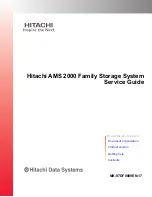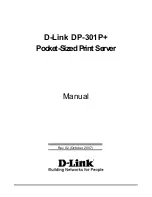
You
can
also
use
the
service
processor
menus
and
the
AIX
diagnostic
service
aids
to
enable
or
disable
operating
system
surveillance.
For
operating
system
surveillance
to
work
correctly,
you
must
set
the
following
parameters:
v
Surveillance
enable/disable
v
Surveillance
interval
The
maximum
time
the
service
processor
waits
between
heartbeats
from
the
operating
system
before
reporting
a
surveillance
failure.
v
Surveillance
delay
The
maximum
time
the
service
processor
waits
for
the
first
heartbeat
from
the
operating
system,
after
the
operating
system
has
been
started,
before
reporting
a
surveillance
failure.
Surveillance
does
not
take
effect
until
the
next
time
the
operating
system
is
started
after
the
parameters
have
been
set.
You
can
initiate
surveillance
mode
immediately
from
service
aids.
In
addition
to
the
three
options
above,
a
fourth
option
allows
you
to
select
immediate
surveillance,
and
rebooting
of
the
system
is
not
necessarily
required.
If
operating
system
surveillance
is
enabled
(and
system
firmware
has
passed
control
to
the
operating
system),
and
the
service
processor
does
not
detect
any
heartbeats
from
the
operating
system
within
the
surveillance
delay
period,
the
service
processor
assumes
the
system
is
hung
and
takes
action
according
to
the
reboot/restart
policy
settings.
See
“Service
Processor
Reboot/Restart
Recovery”
on
page
398.
If
surveillance
is
selected
from
the
service
processor
menus
that
are
only
available
at
bootup,
then
surveillance
is
enabled
by
default
as
soon
as
the
system
boots.
From
service
aids,
the
selection
is
optional.
Call-Out
(Call-Home)
The
service
processor
can
call
out
(call-home)
when
it
detects
one
of
the
following
conditions:
v
System
firmware
surveillance
failure
v
Operating
system
surveillance
failure
(if
supported
by
operating
system)
v
Restarts
v
Critical
hardware
failure
v
Abnormal
operating
system
termination
To
enable
the
call-out
feature,
do
the
following:
1.
Connect
a
modem
to
serial
port
1
(S1)
or
serial
port
2
(S2).
2.
Set
up
the
following
using
the
service
processor
menus
or
the
diagnostic
service
aids:
v
Enable
call-out
for
the
serial
port
where
the
modem
is
connected.
Chapter
7.
Using
the
Service
Processor
405
Содержание 6H0
Страница 2: ......
Страница 12: ...x Service Guide ...
Страница 16: ...xiv Service Guide ...
Страница 18: ...xvi Service Guide ...
Страница 28: ...R CEC Drawer 5 EIA Units Primary I O Drawer 5 EIA Units 8 Service Guide ...
Страница 29: ...CEC Drawer Front View 1 1 Power On LED Chapter 1 Reference Information 9 ...
Страница 33: ...5 Fan 4 U0 1 F4 6 Fan 3 U0 1 F3 Chapter 1 Reference Information 13 ...
Страница 37: ...5 Fan 4 U0 2 F4 6 Fan 3 U0 2 F3 Chapter 1 Reference Information 17 ...
Страница 77: ...DC Power Cable Routings Chapter 1 Reference Information 57 ...
Страница 88: ...68 Service Guide ...
Страница 94: ...74 Service Guide ...
Страница 182: ...162 Service Guide ...
Страница 444: ...424 Service Guide ...
Страница 468: ...Replacement Replace in reverse order 448 Service Guide ...
Страница 489: ...Chapter 10 Parts Information This chapter contains parts information for the system 469 ...
Страница 490: ...CEC Drawer 1 2 3 4 9 10 12 11 7 8 6 5 14 14 13 15 16 17 18 18 19 20 470 Service Guide ...
Страница 493: ...1 2 3 4 5 6 7 8 9 10 11 Chapter 10 Parts Information 473 ...
Страница 495: ...I O Drawer 1 2 3 4 5 6 7 8 9 10 11 16 17 18 19 20 12 14 13 13 15 21 22 23 24 26 25 27 Chapter 10 Parts Information 475 ...
Страница 497: ...7 8 9 10 6 1 2 3 4 4 5 Chapter 10 Parts Information 477 ...
Страница 510: ...490 Service Guide ...
Страница 522: ...502 Service Guide ...
Страница 546: ...526 Service Guide ...
Страница 552: ...532 Service Guide ...
Страница 559: ......
Страница 560: ... Printed in USA April 2002 SA38 0566 03 ...
Страница 561: ...Spine information RS 6000 Enterprise Server Model H80 Eserver pSeries 660 Models 6H0 and 6H1 Service Guide SA38 0566 03 ...
















































